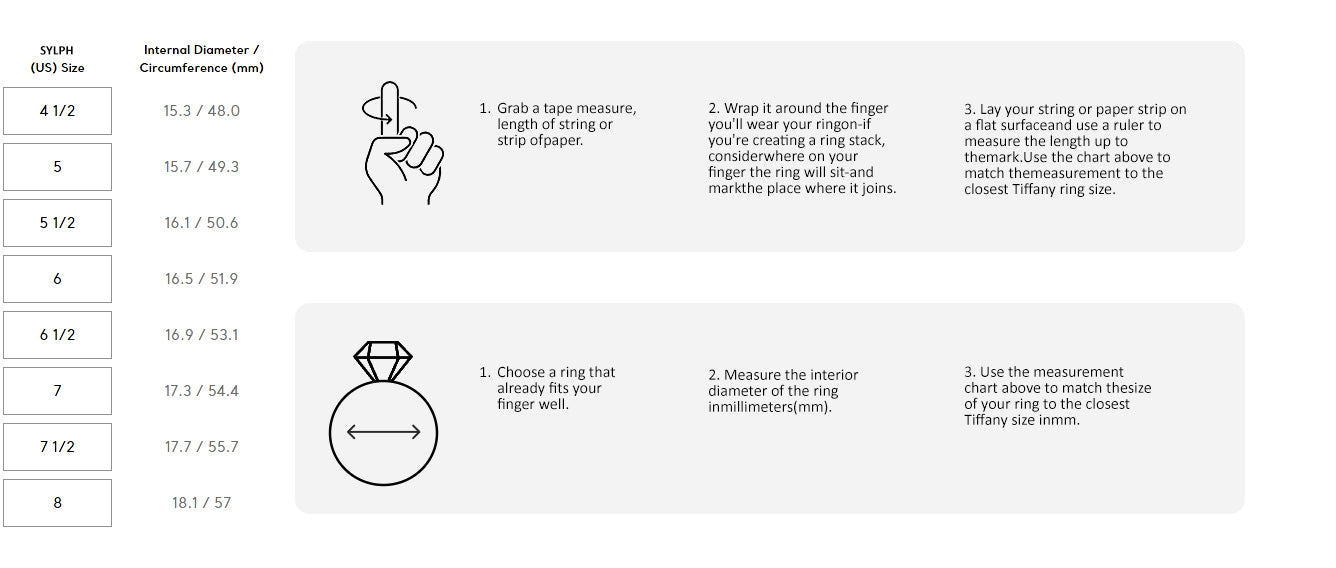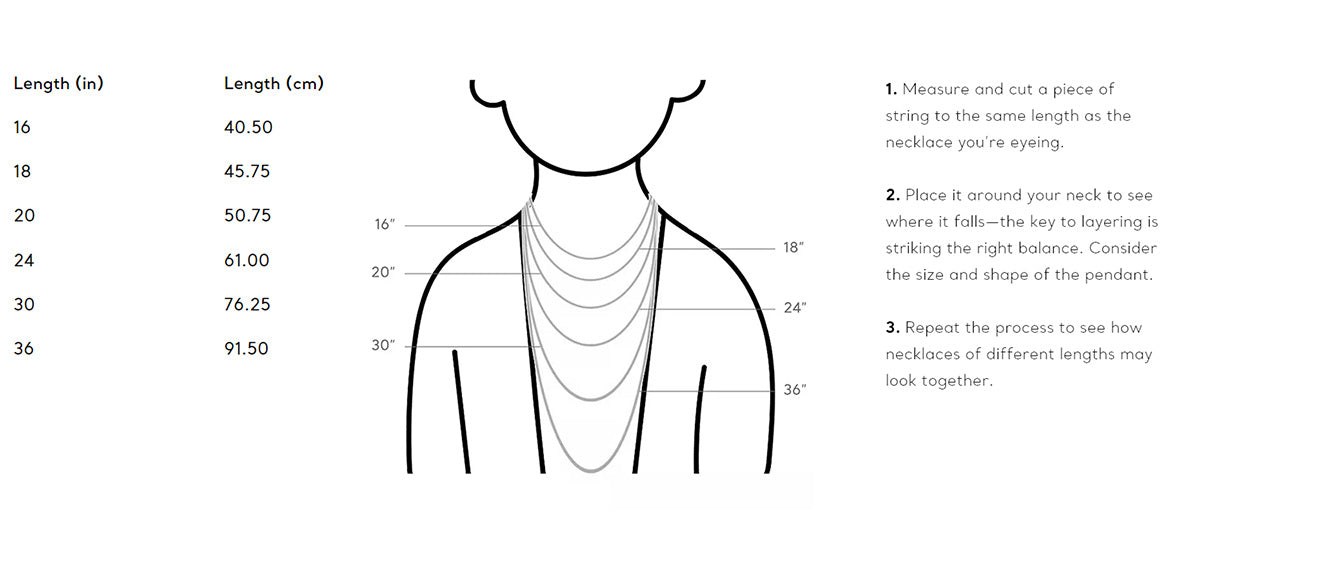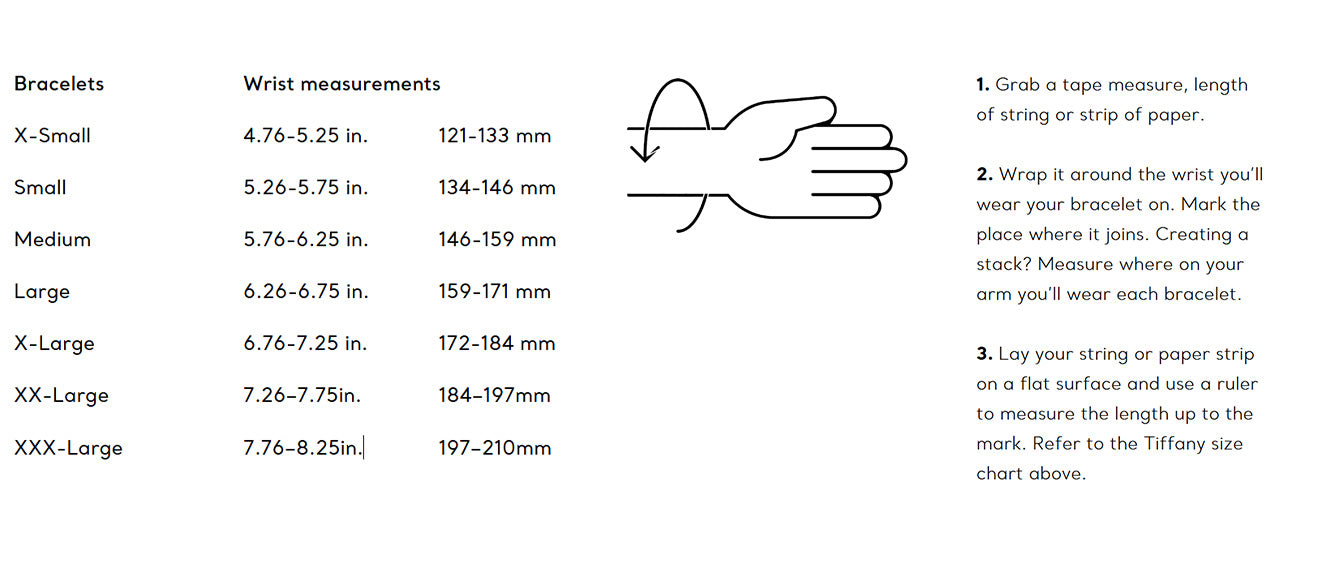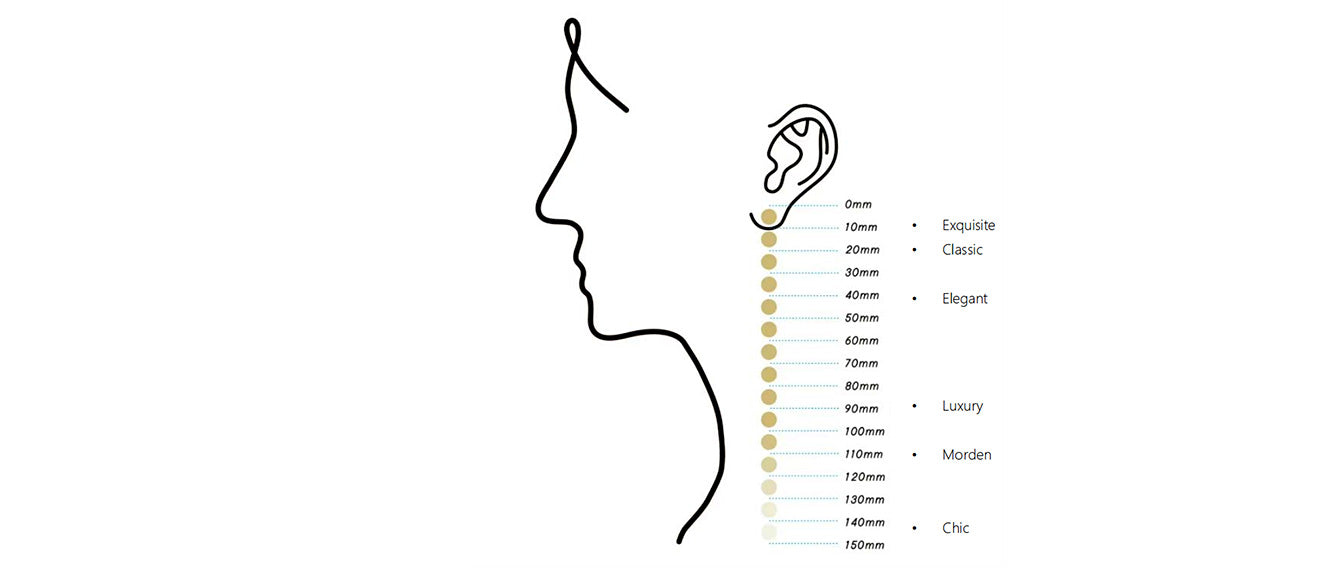RINGS
MEASURING GUIDE
To determine your ring size, we strongly advise that you measure the size of your finger rather than the size of another ring.
- Using a length of string or ribbon, wrap it around the base of your finger. To ensure the ring fits comfortably, we suggest measuring your knuckle as well.
- With a pen, mark the point on the string where the end meets.
- Measure the string in millimeters (recommended) or inches with a ruler.
- Use size chart at the bottom of this page. Refer the size you found in the 1st column (named “finger circumference in MM”) to then find the right size by Cartier collection.
TIPS
- Measure your finger at the end of the day.
- Do not measure your finger when it is hot or cold.
- Remember that the two hands differ slightly in size.
- Make sure that the chosen size leaves enough room for the ring to pass easily along the entire length of the finger.
RING SIZE RECOMMENDATION TABLE
1. Choose a ring that already fits your finger well.
2. Measure the interior diameter of the ring in millimeters (mm).
3. Use the measurement chart above to match the size of your ring to the closest Sylph size in mm.
NECKLACES
The Long and the Short of It
Necklaces vary by chain length. The circumference of your neck and size of the pendant will impact how your necklace sits on its own and with other styles.
Bracelets
It’s All in the Wrist
Size your cuffs and bangles to fit snugly, and your link and chain bracelets with a touch of breathing room to allow for movement.
Earrings
Earrings dimensional measurement diagram
It's always good to know your lobe size–the length from your piercing to the edge of your ear lobe or helix. This measurement will serve as a reference for you when looking at earring sizes and dimensions.
Measure your lobe size with a straight ruler and note it down in centimetres or millimetres.
Stud earring sizes can vary from 0.25-4cm. In general, a 1cm (0.39") stud may cover or sit on your earlobe comfortably.




